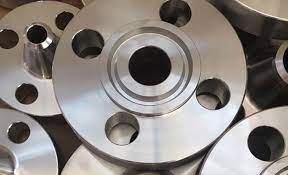What is stainless steel 304 ?

WHAT IS A SS 304 FLANGE?
Flanges are protruding ridges or rims that are commonly used to strengthen or distribute loads. A piping system is made up of pipes, valves, pumps, and other piping elements that are joined together with flanges. It also enables easy cleaning, inspection, and modification. Flanges are the second most common joining method after welding.
Stainless Steel 304 Flanges remain the most versatile and commonly used stainless steel on the market, despite the availability of a number of alternatives. Grade 304 is easily formed into a wide range of automotive, architectural, and transportation components. This material is used to make a wide range of flanges, including Weld Neck, Blind, Spectacle, and others.
TYPES OF SS 304 FLANGES
Flanges aren’t a one-size-fits-all item. Aside from sizing, selecting the appropriate flange design for your piping system and intended use will ensure efficient operation, long life, and the best price. Flanges are available in a variety of shapes and sizes, as illustrated below.
Slip On – Slip Flanges are slipped over the pipe and then welded both inside and outside to provide adequate strength and prevent leakage. These flanges can have a raised or flat face. They work best in low-pressure situations. Slip-on flanges, also known as “Hubbed Flanges,” are distinguished by their slim and compact design.
Socket Weld – This type of flange has a connection in which the pipe is inserted into the flange and then secured with a single multi-pass fillet weld. Socket weld flanges have only one fillet weld on the outside and are frequently not recommended for critical applications. This type of flange is required for low-pressure pipes with small diameters.
Blind flanges have no bore because they are typically used to seal the end of a pipe or its opening. If work needs to be done inside the line, these flanges make it possible. Such flanges are frequently used to obstruct an unnecessary section of pipe or nozzle on a vessel.
Weld Neck – During installation, butt welding is required for this type of flange. They are welded to the end of a pipe to form a high-temperature, high-pressure flange. The ‘neck’ of the weld neck flange can move the pipe tension, lowering the strain in the flange’s lower part.
Threaded / Screwed – This design has a thread inside (female thread) the flange bore that connects to the matching male thread on the pipe or fitting. Despite its ease of use, this flange is not suitable for high-pressure or temperature applications. The threaded flange’s main advantage is that it can be installed without the use of welding.
Lap Joint flanges are two-piece designs that require butting the stub end to the pipe or fitting and then using a backing flange to complete the flange connection. Because of their low-pressure holding capacity, they are used in low-pressure and non-critical applications. Spectacle – This flange is shaped like a spectacle (a pair of glasses); two metal discs are joined together by a metal portion to form the flange. When a piece of equipment or a section of the line must be inspected or removed from service Blind flanges are used to separate equipment or lines as a safety precaution.
